As the winter chill sets in, pet owners often ponder the question: do cats get cold? Understanding the effects of low temperatures on our feline companions is crucial for their well-being.
From recognizing subtle signs of discomfort to devising effective ways to provide warmth, ensuring your cat's comfort during the colder months requires thoughtful consideration.
By exploring practical strategies and insights into cat care in winter, you can equip yourself with the knowledge needed to safeguard your beloved pet from the harsh elements.
Key Takeaways
- Cats do get cold, especially those with thin coats or health conditions.
- Provide warm spots, blankets, or heated beds for your cat's comfort.
- Keep cats with endocrine diseases indoors during winter for their well-being.
- Recognize signs of cold in cats like shivering or seeking warm areas to prevent hypothermia.
Understanding Cats' Cold Tolerance
In assessing cats' cold tolerance, it is crucial to consider various factors such as their coat type, weight, and any underlying medical conditions.
Cats with thicker, longer coats tend to have better insulation against the cold, while hairless cats or those with shorter coats may struggle in colder temperatures.
Additionally, overweight cats may have a harder time regulating their body heat efficiently. Cats with medical conditions such as diabetes or hyperthyroidism are also more vulnerable to the cold.
Understanding these factors can help cat owners better protect their feline companions during the winter months, ensuring they stay warm and healthy.
Signs of Cold in Cats
Understanding the signs of cold in cats is essential for pet owners to recognize and address potential discomfort or health issues during the winter months. Cats may not always show obvious signs of being cold, so it's important to be vigilant. Look out for the following indicators:
- Shivering, sitting in a hunch position, seeking warm spaces
- Symptoms of hypothermia like mental stupor, dilated pupils, difficulty breathing
- Other signs of hypothermia including muscle stiffness, low blood pressure
These signs can signal that your cat is feeling the cold and may need some extra warmth and care. If you notice severe symptoms like a coma, it's crucial to seek immediate veterinary attention to ensure your cat's well-being.
Keeping Cats Warm
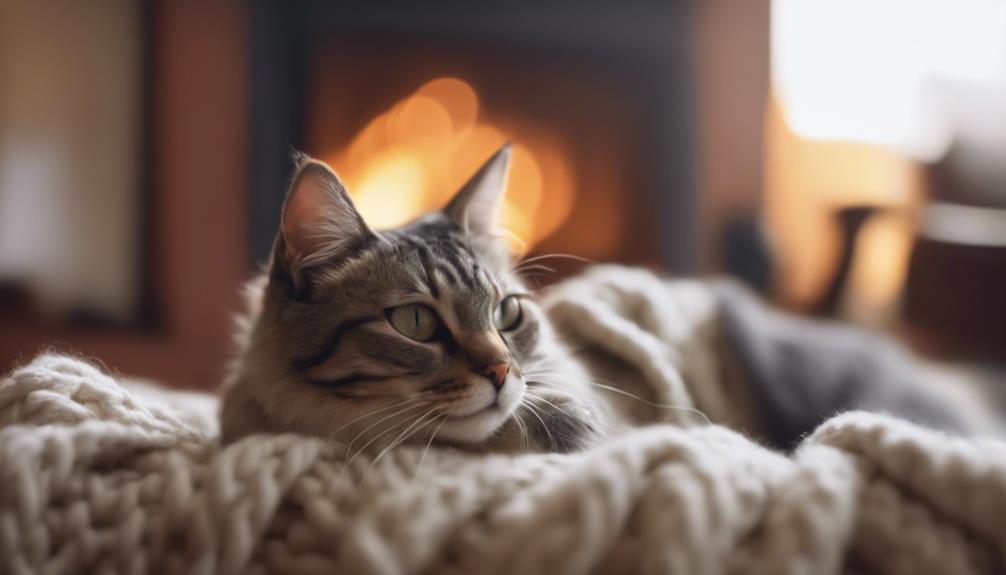
To ensure optimal comfort and health for your feline companion during the winter season, maintaining a warm environment is essential. Indoor cats can also get cold, so providing a cozy spot with blankets or a heated cat bed can help prevent them from feeling chilly.
It's important to note that cats with endocrine diseases or illnesses should not be exposed to cold weather and should be kept indoors. If your cat is mildly cold, keeping them in a warm room can help. In cases of hypothermia, wrap your cat in a warm towel and promptly seek veterinary care.
Additional Considerations for Cat Care
During the cold winter months, it is crucial to consider additional factors for optimal care of your feline companion.
- Maintain a Consistent Temperature: Ensure your home is kept at a comfortable temperature for your cat, especially if they spend a lot of time indoors.
- Regular Veterinary Check-ups: Schedule regular vet visits to monitor your cat's health, especially during the winter months when certain conditions may worsen.
- Provide Mental Stimulation: Keep your cat mentally engaged with interactive toys or puzzle feeders to prevent boredom and promote overall well-being.
Dry Air and Cats in Winter
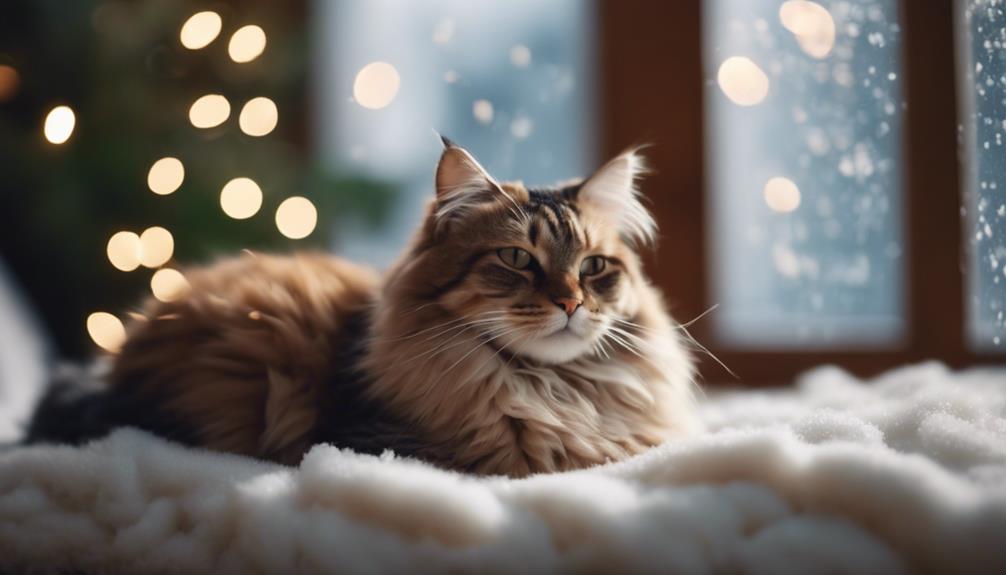
In the winter months, as pet owners focus on maintaining a comfortable environment for their feline companions, it is essential to be mindful of the potential impact of dry air on cats' well-being.
Dry air can lead to issues such as dry skin, irritated sinuses, and respiratory problems in cats. To combat this, consider using a humidifier in your home to add moisture to the air. Additionally, ensuring your cat stays hydrated by providing fresh water can help counteract the effects of dry air.
Providing Cozy Spaces for Cats
Creating snug and inviting resting spots for your cat is essential to ensuring their comfort and warmth during the winter months. Cats, just like humans, seek warmth and coziness when the temperatures drop. Here are some tips to provide your feline friend with the perfect cozy spaces:
- Soft Bedding: Use plush blankets or pet beds to create a soft and warm sleeping area for your cat.
- Sunlit Areas: Place cat beds or cushions near windows where sunlight streams in, offering a natural and cozy warmth.
- Cat Trees or Perches: Cats love to climb and perch up high. Providing a cat tree or high shelves near windows allows them to bask in the sun while feeling safe and cozy.
Endocrine Diseases and Cold Weather
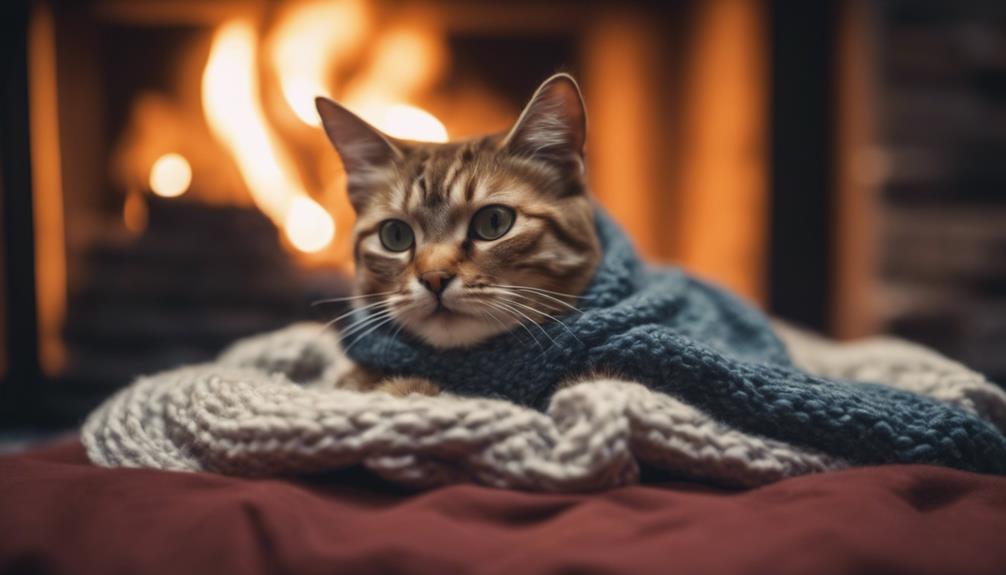
The impact of endocrine diseases on cats' ability to regulate body temperature in colder climates is a critical consideration for feline health during winter months. Endocrine diseases such as hyperthyroidism or diabetes can disrupt cats' metabolism, affecting their ability to stay warm in cold weather. Cats with these conditions may struggle to generate and maintain body heat, making them more vulnerable to the cold.
It is essential for cat owners to be aware of their feline companions' health status and take extra precautions to keep them warm and comfortable during the winter. Providing a cozy and warm environment, regular veterinary check-ups, and appropriate medication management are crucial steps in ensuring the well-being of cats with endocrine diseases in cold weather.
Hypothermia Symptoms and Treatment
Symptoms of hypothermia in cats can range from mild shivering to severe signs of mental stupor and difficulty breathing, indicating a serious condition that requires immediate attention. If you suspect your cat is suffering from hypothermia, here are some signs to look out for:
- Shivering
- Mental stupor
- Difficulty breathing
If you notice any of these symptoms, it is crucial to act quickly and seek veterinary care. Wrap your cat in a warm towel and transport them to the vet for immediate treatment. Remember, hypothermia can escalate rapidly, so prompt action is essential to ensure your cat's well-being.
Recognizing Frostbite in Cats
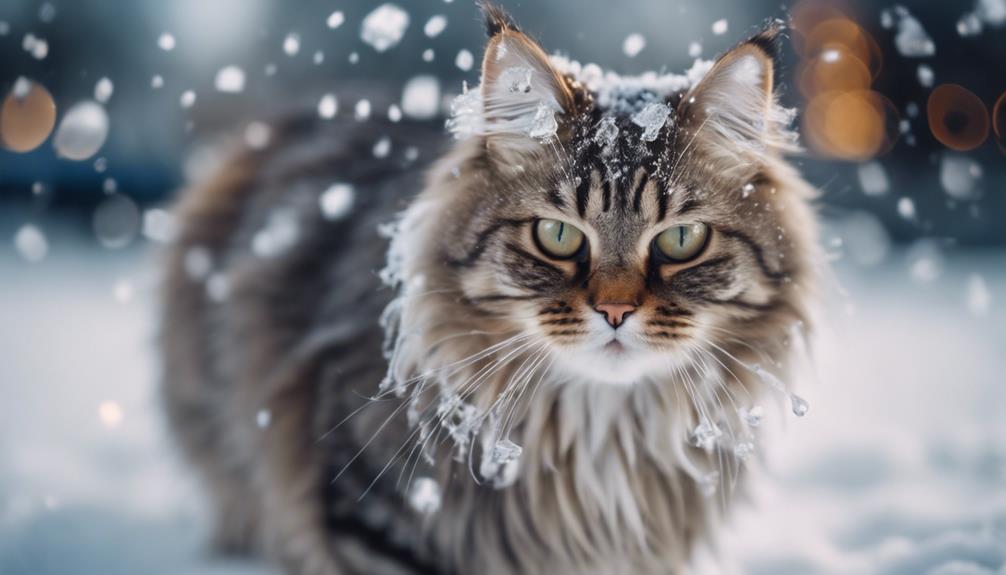
How can cat owners identify frostbite in their feline companions during cold winter months?
Frostbite in cats is a serious condition that can occur when their skin and tissues are exposed to freezing temperatures. Signs of frostbite include pale or gray skin, coldness to the touch, swelling, and pain when touched. Affected areas may also become red, then black as the tissue dies. Ears, paws, and the tail are common areas for frostbite to occur.
If you suspect your cat has frostbite, it's crucial to seek veterinary care immediately. Avoid rubbing the affected areas, as this can cause further damage. Prevention is key, so keep your cat indoors during extreme cold weather and provide warm, cozy spaces for them to rest.
Safety Tips for Cats in Winter
To ensure the well-being of your feline companions during the winter season, implementing safety measures is essential. Here are some tips to keep your cats safe and warm:
- Provide Shelter: Ensure your cats have a warm and dry place to retreat to, such as a cozy bed or a sheltered area.
- Check for Hazards: Remove any potential dangers like antifreeze, which is toxic to cats, and be cautious with heating sources to prevent burns.
- Monitor Outdoor Time: Limit your cat's time outside during cold weather and keep a close eye on them to prevent frostbite or hypothermia.
Water Availability for Cats
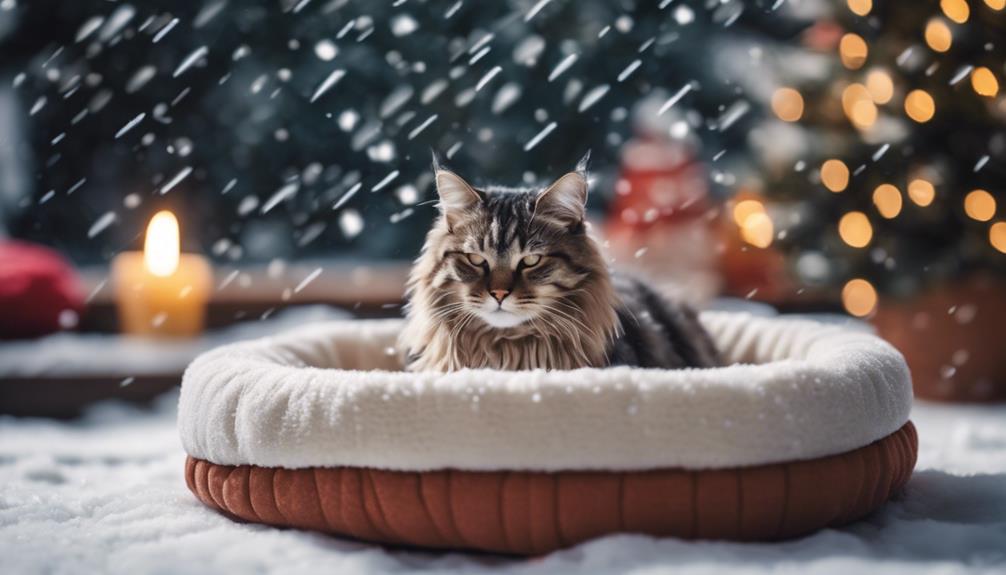
During the winter season, ensuring that cats have access to an adequate and consistent water supply is crucial for maintaining their health and well-being. Cats can easily become dehydrated in cold weather, especially if water sources freeze over.
To help your feline companion stay hydrated, make sure to regularly check their water bowl and refill it with fresh, unfrozen water. Consider using a heated water bowl or placing the water bowl in a warm area to prevent freezing.
Dehydration can lead to serious health issues, so it's essential to monitor your cat's water intake during the winter months. Providing accessible water is a simple yet vital way to ensure your cat stays healthy and comfortable throughout the season.
Fall Pet Safety Concerns
Fall pet safety concerns encompass a range of considerations to ensure the well-being of our beloved animals during the changing season. As autumn sets in, here are some key safety concerns for pet owners to keep in mind:
- Leaf Piles: Watch out for pets playing or hiding in leaf piles, as they can be home to insects or other small creatures.
- Toxic Plants: Be cautious of seasonal plants like chrysanthemums, which can be toxic to pets if ingested.
- Cooler Temperatures: Monitor the temperature indoors and provide warm bedding for your pets to ensure they stay cozy during chilly fall nights.
Heat Exhaustion in Dogs
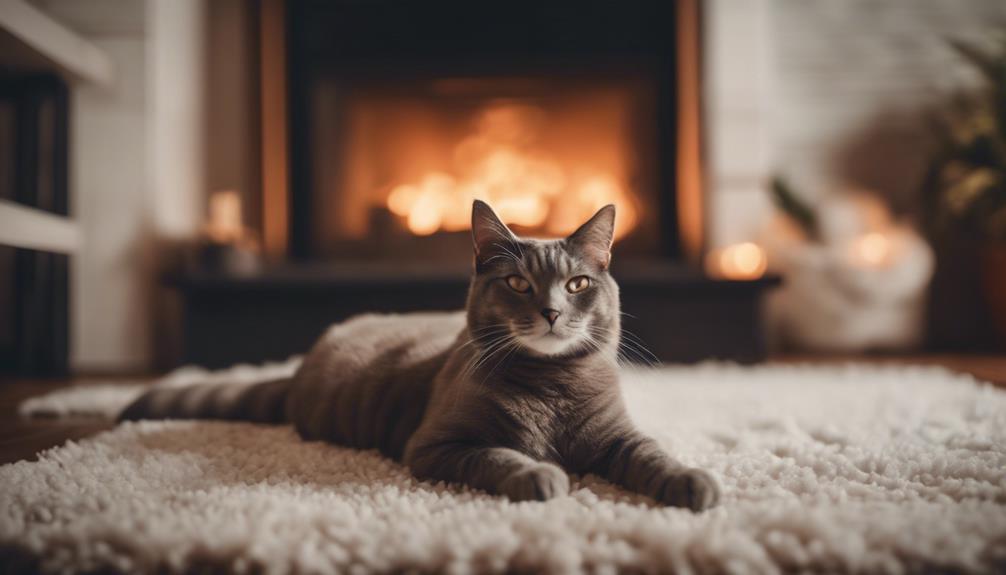
As pet owners transition into the colder months, it is crucial to be aware of the risks associated with heat exhaustion in dogs. Heat exhaustion occurs when a dog's body temperature rises to dangerous levels, typically above 103°F, due to excessive heat exposure. Dogs are more prone to heat exhaustion because they can't regulate their body temperature as efficiently as humans.
Signs of heat exhaustion in dogs include excessive panting, drooling, lethargy, and in severe cases, vomiting or collapsing. To prevent heat exhaustion, ensure your dog has access to shade, fresh water, and never leave them in a hot car. If you suspect heat exhaustion, move your dog to a cooler area, offer water, and contact a veterinarian immediately.
Conclusion
Just as a wise shepherd tends to his flock, so too must we care for our feline companions in the cold winter months. By understanding cats' cold tolerance and implementing strategies to keep them warm, we can ensure their comfort and well-being.
Like a guiding light in the darkness, our proactive measures can protect our furry friends from the harsh elements of winter and keep them safe and snug in our care.




